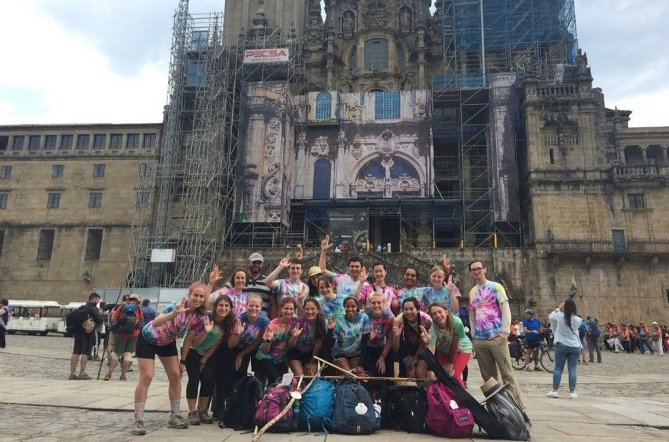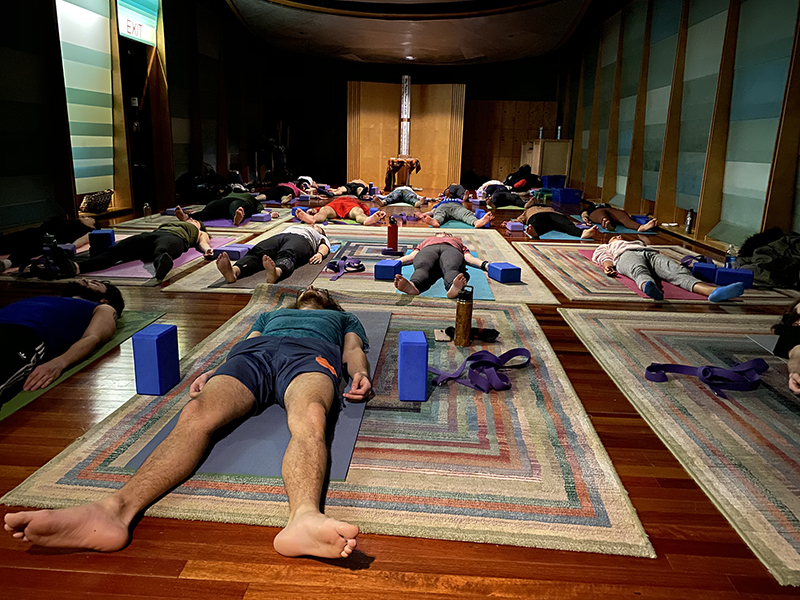
(RNS) — White folks with dreadlocks. Models sporting $800 turbans. Tacky plastic dreamcatchers. These examples might make appropriation seem obvious, but it isn’t always — just ask Liz Bucar.
A leading expert in religious ethics, Bucar readily admits she’s been borrowing other people’s religion since she was an 11-year-old wearing a cross necklace made popular by Madonna. While Bucar is clear that cultural appropriation is often harmful, she’s more interested in grappling with the elusive, murky forms of religious borrowing, like, say, walking the Camino de Santiago as a non-Catholic.
Bucar found herself writing her latest book, “Stealing My Religion: Not Just Any Cultural Appropriation,” in part out of frustration with how her students at Northeastern University were using the label “cultural appropriation” in her classroom.
“It was shutting down conversations,” Bucar told RNS. “We couldn’t have a conversation about the ethical gray area.”
Published in September by Harvard University Press, Bucar’s book uses three incisive case studies to invite readers into a discussion on religious appropriation where easy answers don’t exist. RNS spoke to Bucar about her own missteps with religious appropriation, how religion can be co-opted for political agendas and tools for identifying religious appropriation in the future. This interview has been edited for length and clarity.
What’s the difference between borrowing religion and religious appropriation?
I realized any time the word appropriation was said in my classroom, in public or even by other scholars, the assumption was it meant something bad. It already had within it a moral judgment. So I tried to introduce the term ‘religious borrowing’ as something morally neutral.
Religious borrowing has always existed. It’s certainly a big part of the way religion in America is experienced and consumed, especially if you think about the spiritual but not religious or the nones. Some forms of cross-tradition borrowing are positive. For me, borrowing is the bigger category and appropriation is the problematic form. And the reason it’s problematic, for me, is when the borrowing happens in conditions of injustice, oppression and power inequities. That’s what generates harm. So a good intention doesn’t get you off the hook. You have to zoom out and look at bigger structures. It becomes a way to think about your position to religious communities you’re not part of, and your position of privilege in the world in general, and how complicated that is.
Why do you think progressive, non-religious liberals might be more likely to fall into the trap of religious appropriation?
I think that progressive secularists, a community which the academy is full of and which I’d probably identify with, haven’t always been understanding of religious communities or thought of them as a source for what human flourishing can look like. They often think about religious communities as problems to be solved, or as people ruled by hierarchical institutions or arcane rules and doctrines. This position sets them up for maybe not being as respectful or deferential to religious claims as they could be.
And then the spiritual but not religious are a whole other group of people who are pretty primed to engage in religious appropriation. By definition, they say religion is not for them and are insistent that spirituality is something really different from religion. But as a scholar of religion, I believe spirituality is what they are calling the pieces of religion that they like. They are often self-curating their spiritual and devotional practice, but I’m not sure they are always taking seriously that that process can sometimes make oppression worse. I don’t know if that’s part of their calculation when they decide if they want to burn some sage or wear a rosary.
In the chapter on solidarity hijab, we see feminists using hijabs in a way that harms members of the very community they are advocating for. Where did this act of protest go wrong?
Progressives and liberals donned hijabs to be in solidarity with Muslim women and combat gendered Islamophobia, but they did it in a way that really centered themselves, and that enforced white secular feminism. Some Muslim woman felt like it was another layer of being othered and tokenized and decentered and erased.
The act erases half the Muslim women in the U.S. who don’t wear a hijab. I also think if people really understood the way hijab functions for the Muslim women who wear it, and the values associated with it, they would see why it might not be appropriate as a form of political protest and solidarity. There’s something really odd about taking a religious practice which is about humility and modesty, and then putting it on your head and taking a selfie or posting on social media to get a lot of likes and to virtue signal that you are against gendered Islamophobia. Part of the dynamic with solidarity hijab was a lot of white non-Muslim women centering themselves as the true feminists, rather than following and learning from others.
The liberal political agenda of fighting gendered Islamophobia, which is a good thing, didn’t take the time to be truly intersectional in its approach to the problem. They didn’t actually ask the community what it wanted, and sometimes what the community wants is harder to give.
The first group that Liz Bucar took on the Camino de Santiago in Spain. Photo courtesy of Bucar
Can you talk about how Protestantism eased the way for the appropriation of pilgrimage in your program on the Camino de Santiago?
At Northeastern, I developed a month-long study abroad program for Spain, and part of that was studying pilgrimage by walking the last 150 miles of the Camino de Santiago. It was set up with the idea that, if you do a religious practice, you will learn something special about it. As I was starting to think about appropriation, I thought, huh, that sounds a lot like religious appropriation for course credit.
Most of my students are not religiously affiliated or Protestant, and even the non-affiliated students have a sort of Protestant idea of what religion looks like. That form of religion looks like an interior personal experience with God and sees the hierarchy and smells and bells of the Catholic church as getting in the way.
Many of my students were approaching the Camino like they could make the Camino into what they wanted without having to engage with its problematic history. The students don’t want to reckon with the problematic parts. They want a personal experience that is authentic and meaningful and transformative.
I think it’s really important that a study abroad program that centers a religious practice examines some of these ethical questions around appropriation and borrowing. When I think about how I’d go about it again, I would ask students to center the discomfort around searching for authenticity and self-actualization by borrowing someone else’s practice and extracting the essence of it.
RELATED: Beyond smudging: Indigenous creators reclaim their influence on the wellness industry
Can you tell us about the secular yoga class you led? What did you glean from that experience?
For part of the research for the book, I got certified as a 200-hour Kripalu yoga instructor and led a yoga class at Northeastern University where I teach. Based on advice from a book I read, I tried secularizing the yoga practice to make it more accessible. I took out Sanskrit names for the poses, I didn’t talk about classic texts or big metaphysical ideas. And I thought it would be better, because I wouldn’t be standing in front of them pretending to be a spokesperson for South Asian culture or using Sanskrit as pseudo-liturgy or as a way for people to see me as more of an authority.

A yoga class at Northeastern University led by Liz Bucar. Photo courtesy of Bucar
But the flip side of appropriation is not only what you borrow, but what you leave behind. And I realized I had bought into the idea that there was something dangerous about Eastern religious practices, or the religious content of yoga and that there was something safer about a white woman teaching yoga practices. And so I then no longer felt comfortable teaching yoga in that space. I felt like what I was erasing was contributing to structural injustice. But I didn’t realize that until I tried it out.
How might we borrow religion more responsibly?
I think part of it is religious literacy. One way to prevent exploitation is to think about a religious practice and really understand it embedded in the context of the community and histories it’s part of, the systems and values it’s associated with. But that’s not enough. We also need to interrogate the stance that we are entitled to take religious practices from others for our own needs.
The other thing is to admit that we are engaged in religion and not keep insisting that our spiritual practices are not religious or that we are somehow better than religious practitioners. Engaging with the question of religious appropriation is an opportunity to learn about your position and relation to systems and structures of injustice, rather than believing you are entitled to take whatever you want for your personal enrichment.
RELATED: Dear Nancy Pelosi and the Democrats: A hijab is not a hat

